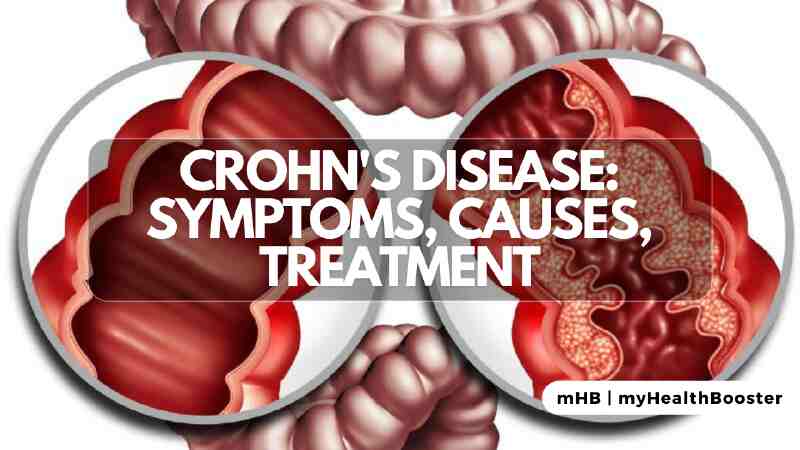Crohn’s disease, a form of inflammatory bowel disease (IBD), presents challenges to those affected. This article delves into the symptoms, causes, and various treatment options available to manage this condition effectively.
What is Crohn’s Disease?
Crohn’s disease induces inflammation in a section of the digestive system, most commonly affecting the small intestine and colon. As part of the inflammatory bowel disease group, alongside ulcerative colitis (UC), Crohn’s has no cure. However, with appropriate treatment, individuals can experience symptom relief and maintain an active life.
Symptoms of Crohn’s Disease
The symptoms of Crohn’s disease can vary, with individuals experiencing intense periods of symptoms followed by periods of remission. Early signs may include frequent diarrhea, abdominal pain, unexplained weight loss, and blood in the stool. As the disease progresses, additional symptoms like nausea, fatigue, joint pain, fever, persistent bloody diarrhea, and mouth sores may emerge.
Types of Crohn’s Disease
Crohn’s disease is classified into five types based on the affected part of the digestive tract:
- Ileocolitis: Affecting the colon and the last part of the small intestine.
- Crohn’s Colitis: Involving only the colon.
- Gastroduodenal Crohn’s Disease: Impacting the stomach and the initial part of the small intestine.
- Ileitis: Targeting the ileum.
- Jejunoileitis: Causing small areas of inflammation in the upper half of the small intestine.
Causes of Crohn’s Disease
The exact cause of Crohn’s disease remains unknown. It is often considered an autoimmune condition, where prolonged inflammation results not from the immune system attacking the body but potentially from responding to harmless elements like viruses, bacteria, or food in the gut. Importantly, Crohn’s disease is not contagious.
Risk Factors
Several factors may increase the likelihood of developing Crohn’s disease:
- Genetics: Family history plays a significant role, with about 20% of individuals having close relatives affected by Crohn’s or UC.
- Age: Although it can affect any age group, it primarily occurs in the young, with most diagnoses before the age of 30.
- Smoking: Smoking can exacerbate Crohn’s symptoms and increase the risk of complications.
- Medications: Nonsteroidal anti-inflammatory drugs (NSAIDs) may worsen inflammation.
- Geography: Urban or industrialized areas show higher occurrences.
- Diet: High-fat or processed foods may contribute to increased risk.
- Infection: Certain bacteria, including Mycobacterium avium paratuberculosis, may be linked to Crohn’s disease.
Diagnosis of Crohn’s Disease
Diagnosing Crohn’s disease involves a comprehensive approach:
- Medical History: A review of symptoms and personal or family medical history.
- Lab Tests: Blood tests and stool samples to rule out infections causing diarrhea.
- Imaging Tests: MRI, CT scans, and endoscopic procedures like colonoscopy to visualize the digestive tract.
Stages of Crohn’s Disease
The disease often progresses over time, with stages categorized as mild, moderate to severe, or severe. Endoscopy helps determine the level of inflammation, guiding appropriate treatment.
Treatment Options
There is no one-size-fits-all treatment for Crohn’s disease, as it depends on individual symptoms and severity. Treatment primarily involves medication, including anti-inflammatory drugs, corticosteroids, immune system modifiers, antibiotics, and biologics. Surgery may be necessary in cases of complications or medication ineffectiveness.
Complementary and Alternative Therapies
While medications are the primary focus, complementary therapies such as mind-body techniques (relaxation, meditation), dietary supplements, probiotics, and medical cannabis may help alleviate symptoms. It’s crucial to consult with a healthcare professional before incorporating these into a treatment plan.
Home Remedies
Certain lifestyle changes can complement medical treatment:
- Avoid NSAIDs: Opt for acetaminophen instead.
- Quit Smoking: Smoking cessation can reduce flare-ups.
- Manage Stress: Mind-body therapies like meditation and yoga may help alleviate stress.
Disparities and Complications
There are racial and ethnic disparities in Crohn’s disease diagnosis and treatment. Complications, both local and systemic, can arise, affecting the intestines and other organs. Regular monitoring and early intervention are essential to manage complications effectively.
Prognosis
While Crohn’s disease is lifelong and varies in severity, it generally doesn’t shorten life expectancy. With proper treatment, individuals can lead productive lives. Although there’s no cure, symptom relief, reduced flare-ups, and effective management of complications are achievable.
Summary
Understanding Crohn’s disease involves recognizing its symptoms, exploring potential causes, and navigating the diverse treatment options available. Collaboration with healthcare professionals, incorporating lifestyle changes, and staying informed about the latest advancements contribute to effective disease management.
